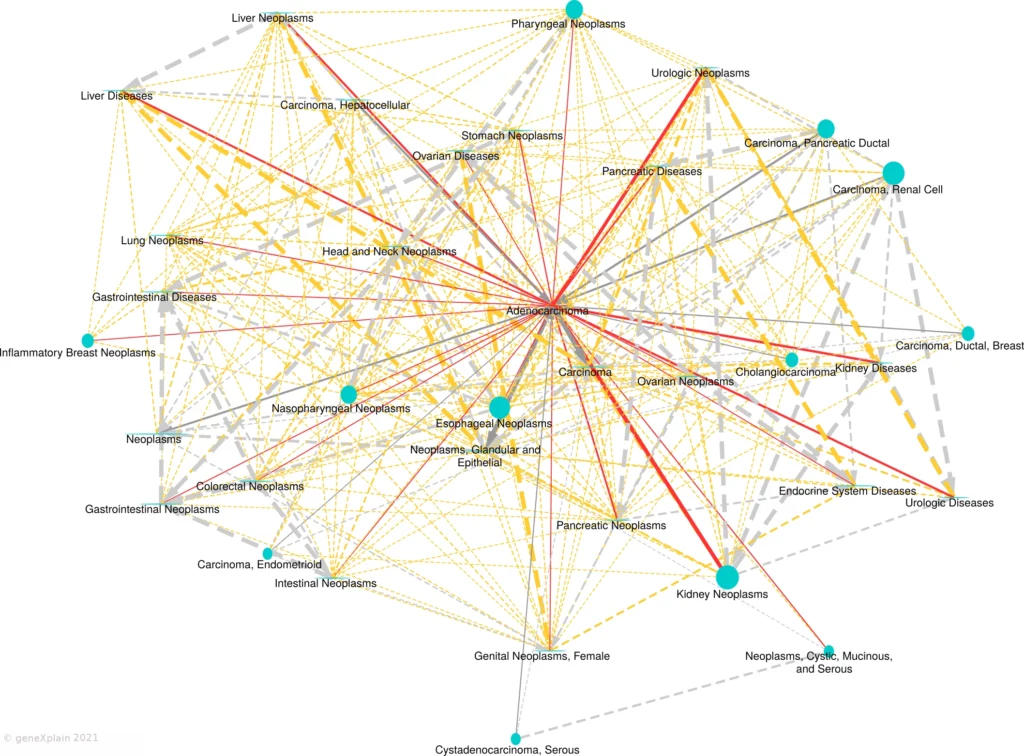Disease mechanism:
HumanPSD reports description of disease molecular mechanisms for over 3,900 human diseases.
HumanPSD also reports inferred disease-disease relationships on the basis of shared Causal and Preventative biomarker genes. Disease networks are derived from these relationships and organized into clusters with apparent biomedical relevance. The inferred disease-disease associations coincided with known clinical correlations such as comorbidities or known disease etiologies.
Adenocarcinoma
Disease similarity map:

Legend:
This Disease Similarity Map connects diseases (nodes) with edges on the basis of common causal biomarker genes (edges are shown for FDR < 0.05 and overlap size >= 2). The primary disease is represented by a red diamond shape, neighboring diseases by blue circles. Solid edges connect the primary disease to neighboring diseases. Dashed edges connect neighboring diseases. Undirected solid red edges connect the primary disease in the center with similar diseases (neighbors), undirected dashed orange edges connect similar neighbors. Gray arrows point from a child disease to the parent disease according to the MeSH hierarchy. Edge widths are proportional to the statistical significance of association and node sizes are proportional to the number of causal biomarker genes of the disease.
